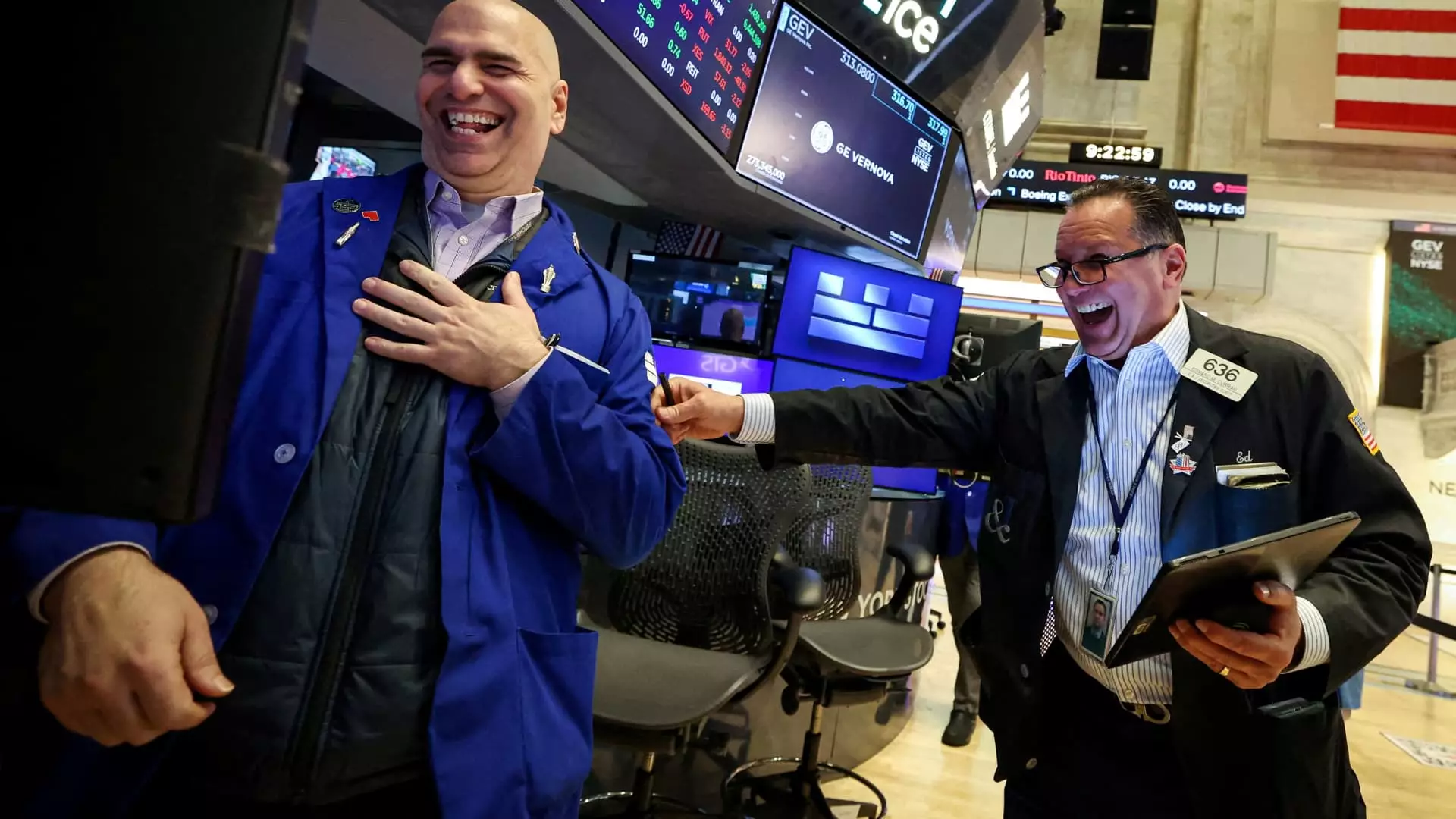The stock market recently experienced a dramatic two-day rally characterized by an astonishing surge of 1,100 points in the Dow Jones Industrial Average. Though initially painted as a bullish turnaround, a closer inspection reveals a more alarming underbelly: short sellers scrambling to cover losses. This behavior reflects not a robust economic revival, but a reactive market riddled with mistrust and speculative tactics. Hedge funds had significantly ramped up their bearish positions in response to shaky macroeconomic signals, particularly after the chaotic tariff announcements from Donald Trump in early April. Such volatility sets the stage for an environment ripe for abrupt price swings triggered not by genuine economic growth but by a tactical scramble among market players.
The concept of short selling, while integral to market discourse, often leads to misguided panic within the investor community. In essence, short sellers borrow stocks to sell at current prices, only intending to buy back those same stocks at lower prices. However, when the anticipated decline fails to materialize, and prices instead soar—often due to broader market manipulations or psychological phenomena—these sellers are forced to buy back shares at inflated rates, compounding their losses. This scenario, termed a “short squeeze,” plagues the market with volatility, and the recent rally appears less like a recovery and more like a squall generated by fear and hasty reactions.
The Fed and Trade: Specters of Uncertainty
A significant driver behind this stock market rally has been the erratic commentary emanating from the Trump administration regarding both trade negotiations with China and the Federal Reserve’s leadership. Carrying with it the specter of uncertainty, the recent suggestion from Treasury Secretary Scott Bessent that “there is an opportunity for a big deal here” serves as little more than a placeholder for meaningful, actionable policy changes. The markets responded eagerly, buoyed by the idea that such hope could replace the looming dread of a trade war. Yet, should we celebrate a mere possibility, especially when no concrete agreements exist?
Trump’s fluctuating stance on Federal Reserve Chair Jerome Powell further exacerbates the situation. After publicly bashing Powell just days prior, declaring the chair’s “termination cannot come fast enough,” Trump’s abrupt reversal stating he has “no intention” of firing Powell comes off as further erratic behavior. What does this suggest about the stability of the markets? It reflects uncertainty, leaving investors on edge and cultivating an environment where any sudden decision can wreak havoc.
The Illusion of a Strong Rally
The staggering increase in stock prices should prompt critical analysis rather than enthusiastic endorsement. The reality is that many hedge funds remain entangled in shorts, failing to translate cover positions into outright long investments. John Flood from Goldman Sachs has echoed this sentiment, indicating that the existing rally lacks the underpinning of solid conviction. The market remains vulnerable, with many participants not genuinely buying into a sustainable recovery but rather covering positions with no long-term strategy in motion.
This small respite from a four-day losing streak, powered primarily by a temporary short-covering rally, can easily devolve into a sell-off once the panic dissipates and the reality of economic complexities returns. Without a substantial transition from mere short covering to long-term purchasing behavior by investors, any uptick in stock prices results from superficial strength rather than true economic resilience.
The Future: A Tenuous Balancing Act
As we peer into the uncertain horizons, one must question if the market’s current behavior is merely a flash in the pan or the precursor to more distressing declines. Traders need to navigate a treacherous path where forced buying fueled by panic isn’t indicative of sustainable growth. The ongoing situation necessitates a more tempered approach: are we prepared to observe the market’s movements through a lens of skepticism and clarity, recognizing that momentary rallies built on the foundations of fear and reaction are hardly the sign of a thriving economy? Rather, we must remain vigilant, cognizant that today’s seemingly exuberant stock performance could morph into tomorrow’s collective illusion. The true challenge lies in deciphering whether the markets will stabilize and grow organically or remain prisoners of a cycle driven by speculative extremes.

